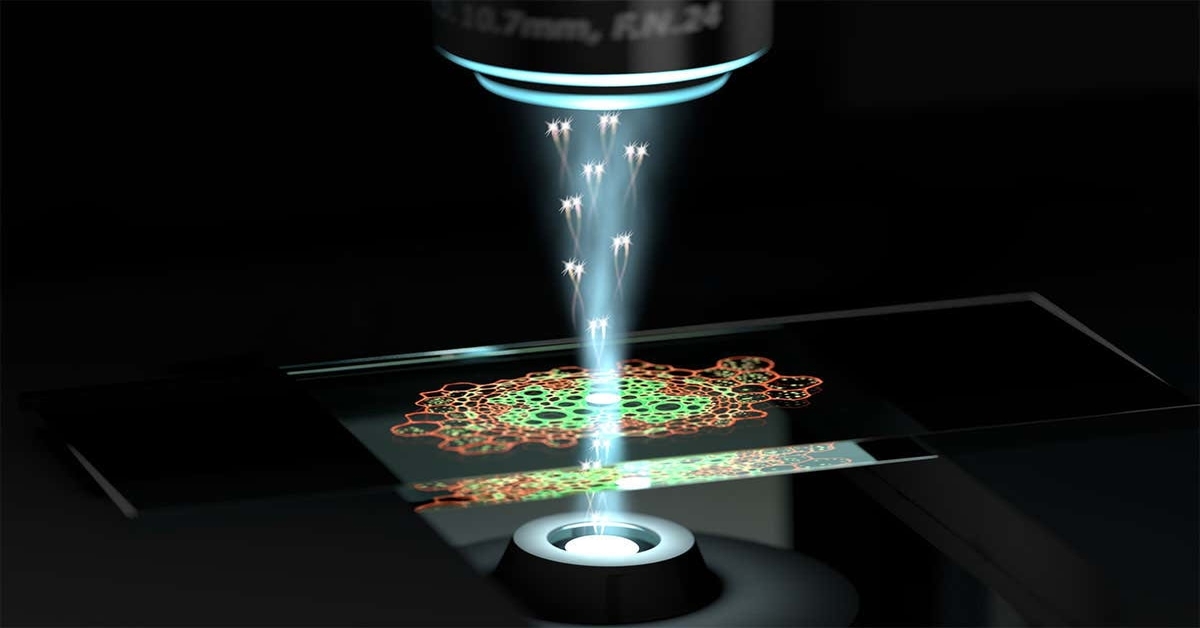Microscopes are indispensable in every science laboratory – they allow scientists to take a peek at tiny objects invisible to the naked eye.
While technological advancement has created powerful microscopes that have bright lasers billions of times brighter than the sun, this has also been a conundrum for some biologists. They can’t use these state-of-the-art microscopes to study fragile biological systems such as human cells as the lasers are so strong that all they do is just obliterate the specimens.
Some Australian researchers might just have the solution for that – quantum microscopes powered by the science of quantum entanglement, a strange phenomenon Albert Einstein once dubbed “spooky interaction at a distance”.
Their damage-eluding microscope is the first entanglement-based sensor that supersedes non-quantum technology, allowing the researchers to gently and safely illuminate living samples for a much longer view time.
Quantum spookiness.
Professor Warwick Bowen, a quantum physicist at the University of Queensland and the lead researcher of the study published in Nature, said that the invention of the microscope is a “long-awaited milestone on international quantum technology roadmaps and it represents the first step into an exciting new era for microscopy, and for sensing technologies more broadly”.
But how does Professor Bowen’s spooky microscope manage to not frighten its target specimens?
Quantum entanglement has been puzzling physicists all around the world. They realised that two particles can become “entangled”, or linked, or dependent on each other, and will therefore always mirror each other’s properties no matter where they are. If particle A decides to do a Cha-Cha dance, the entangled particle B will have no choice but to carry out the exact Cha-Cha choreography.
The Australian scientists harnessed this peculiar phenomenon to train the photons in the microscope light beam to behave themselves as they leave the microscope, so that they pass through the sample and arrive at the detector in a very orderly and uniform fashion. By doing so, the light beam becomes extremely “quiet”, which immensely improves the clarity of images without the need to increase the laser intensity.
They created this effect using a “non-linear crystal” in their experimental setup, which squeezes the light passing through it. In the crystal, the photons are forced to interact with each other to the point that they intrinsically correlate to each other.
With their microscope all spooked up, the team managed to image yeast cell walls – around 10 nanometres thick – with a 35 % improvement in clarity. This afforded them to peek at the detailed structures of the cell that would otherwise be impossible using conventional approaches, all done with the cells intact.
Prof Bowen also plans to further enhance the quantum light by making it brighter. This could potentially speed up imaging by a factor of ten – so instead of taking a minute to get one image of a virus through traditional precision microscopes, a quantum microscope might take only six seconds. A myriad of biological reactions could have taken place during the imaging process, so reducing the time required for it means those changes can be documented, instead of missed.
“The benefits are obvious – from a better understanding of living systems to improved diagnostic technologies,” said Prof Bowen.
Improving many facets of our lives.
Australia’s Quantum Technologies Roadmap claims that sensors underpinned by quantum entanglement, such as Prof Bowen’s microscope, will bolster a new wave of technological breakthroughs in medicine, engineering, transport, computing and communication.
They can transform almost every aspect of how we view the world, from better navigation, to better health care and medical diagnostics, to better views of the universe.
In the words of Prof Bowen, “The last piece in the puzzle of the quantum advantage was sensing, and we’ve now closed that gap. This opens the door for some wide-ranging technological revolutions.”




































